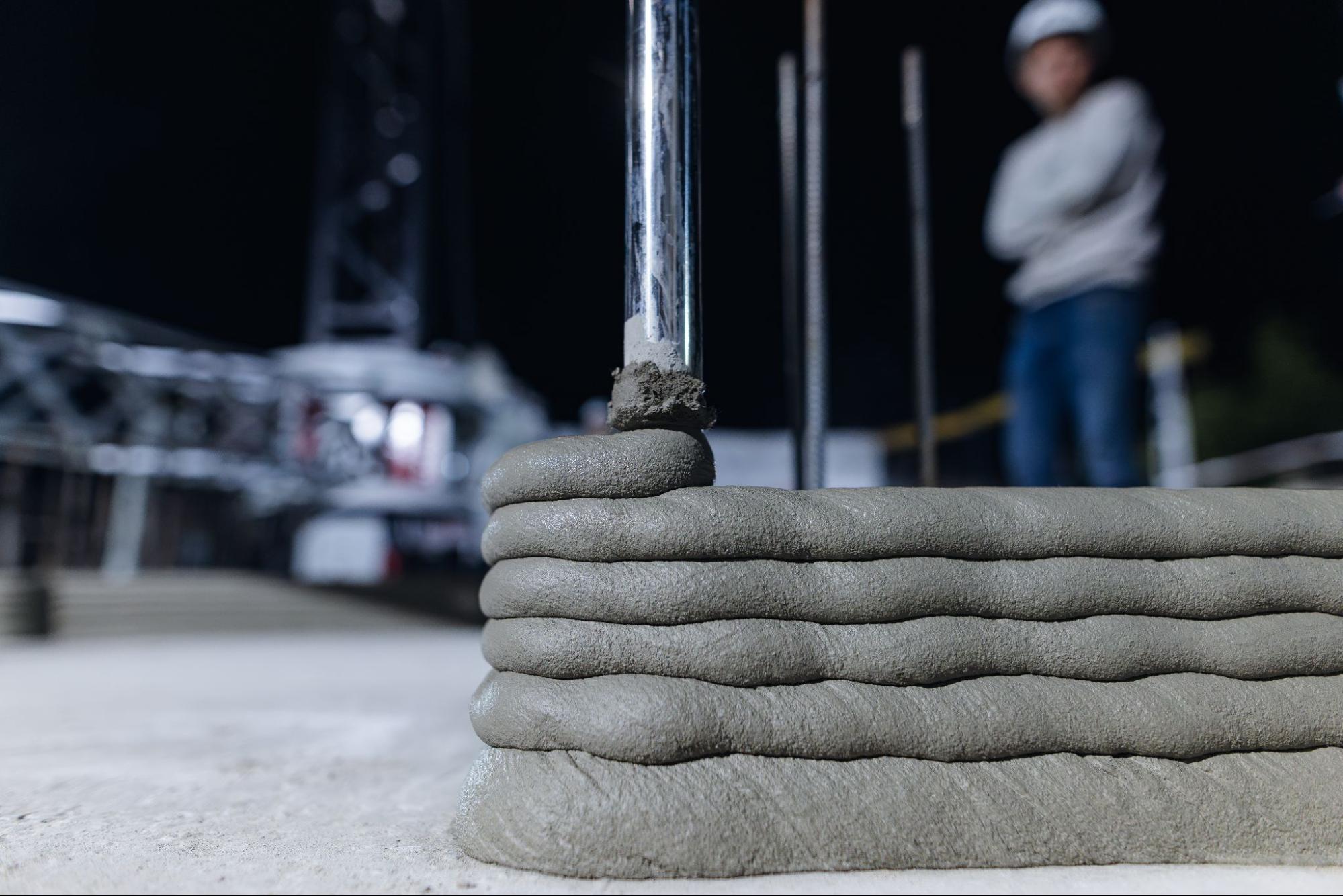Top Materials Used in 3D Printed House Construction

3D printing is no longer just for plastic trinkets or industrial prototypes. These days, entire houses are being printed—layer by layer—using large-scale construction 3D printers. And while the idea of a 3D printed house still sounds futuristic to some, it’s already happening around the world, including here in the Philippines.
But what exactly are these homes made of? Let’s break it down.
On This Page
- Why the Material Matters in 3D Printed Construction
- Concrete – The Most Popular Choice
- Mortar – For Smooth, Detailed Prints
- Geopolymer – A More Sustainable Alternative
- Clay and Earth-Based Materials
- Plastic and Composite Polymers – Rare but Innovative
- Other Additives and Innovations
- How to Choose the Right 3D Printing Material for Homes in the Philippines
- The Future of 3D Printing Materials
Why the Material Matters in 3D Printed Construction
When you’re building a house using 3D printing technology, choosing the right material is everything. The material must be strong, durable, weather-resistant, and, ideally, sustainable. It also needs to work well with the printing machine—meaning it must flow smoothly through the nozzle, dry at the right speed, and support the layers above it.
Let’s dive into the most common 3D printing materials used to build homes.
1. Concrete – The Most Popular Choice
Why it’s used:
Concrete is hands-down the most widely used material in 3D printed house construction. It’s strong, affordable, and already a staple in traditional building.
But in 3D printing, it’s not just regular concrete. It’s a special mix—usually made thinner (more like a paste) to flow easily through the printer nozzle, while still strong enough to support the structure.
Pros:
- Widely available and cost-effective
- Strong and durable
- Fire-resistant
- Great for structural walls and foundations
Cons:
- Heavy
- Takes time to set
- Can crack if not mixed properly
Many 3D printed houses in the Philippines—especially those in pilot projects for low-cost housing—use this type of concrete mix. It’s ideal for local climates and offers a good balance of strength and affordability.
2. Mortar – For Smooth, Detailed Prints
Mortar is similar to concrete but has finer particles, making it ideal for smoother, more detailed printing. It’s also one of the most commonly used materials, alongside concrete, in making a 3D-printed house.
Why use it?
If you’re building decorative elements or want cleaner lines, mortar-based 3D printing material is often the go-to. It sets faster than concrete, which helps keep the shape of intricate designs.
Pros:
- Smooth finish
- Easier to mold into complex shapes
- Quick drying
Cons:
- Not as strong as concrete
- Can be more expensive
This is especially useful in 3D printed homes where design aesthetics play a role—like eco-resorts or modern villas.
3. Geopolymer – A More Sustainable Alternative
Geopolymers are made from industrial by-products like fly ash or slag. Instead of using cement (which has a high carbon footprint), geopolymer materials offer a greener solution for 3D printed house construction.
Related: Sustainable Living: How 3D Printed Houses Promote Eco-Friendly Architecture
Why use it?
For anyone exploring sustainable 3D printed housing in the Philippines, geopolymers are an exciting option. They reduce carbon emissions and can even use local waste materials.
Pros:
- Eco-friendly
- Fire and chemical-resistant
- Long-lasting
Cons:
- Still relatively new in the construction scene
- May need additives to improve printability
4. Clay and Earth-Based Materials
Clay and other earth-based 3D printing materials are making a comeback, especially in areas where sustainability and natural insulation are key. Some companies are combining traditional materials with modern 3D printing to create eco-friendly homes with a rustic vibe.
Why use it?
Perfect for warm climates, these materials offer great insulation and are often hyper-local. This reduces transportation costs and carbon emissions.
Pros:
- Naturally insulating
- Eco-friendly and biodegradable
- Affordable
Cons:
- Not suitable for all climates (rain and humidity may weaken it)
- Slower build time compared to concrete
In rural areas of Southeast Asia, including some regions of the Philippines, these natural materials could offer a low-cost, climate-appropriate solution for 3D printed housing.
5. Plastic and Composite Polymers – Rare but Innovative
While not often used for full house construction, some 3D printed housing components—like panels, insulation, or furniture—can be made from recycled plastic or composite polymers.
Why use it?
Plastic-based materials are lightweight and moldable. Plus, recycled plastic can reduce environmental impact. This is more common in prefab-style 3D printed housing systems where plastic panels or modules are printed off-site.
Pros:
- Lightweight and easy to transport
- Can be recycled
- Quick to print small components
Cons:
- Not strong enough for load-bearing walls
- May degrade in harsh outdoor conditions
This material isn’t widely used for structural walls yet, but it’s being explored for affordable housing solutions in the Philippines, especially in coastal areas where lighter materials are easier to handle.
Other Additives and Innovations
No 3D printed house is built from just one ingredient. Most materials are mixed with additives to improve performance:
- Fibers (like glass or basalt) to reinforce strength
- Plasticizers to improve flowability
- Retarders or accelerators to control drying time
- Waterproofing agents for tropical or rainy environments (like the Philippines)
As 3D-printed homes in the country continue to grow, expect more customized blends made specifically for local weather and building needs.
How to Choose the Right 3D Printing Material for Homes in the Philippines
Here’s where it gets interesting. When building a 3D printed house in the Philippines, you can’t just choose any material—you have to consider local conditions like:
- Heat and humidity: Materials must resist moisture, mold, and heat.
- Typhoons and earthquakes: Structural strength is key.
- Affordability: Cost-effective materials are a must, especially for housing projects in underserved communities.
- Availability: Using locally sourced materials speeds up construction and supports sustainability.
Some local builders and researchers are already testing soil-based or recycled-material mixes to create eco-friendly 3D printed homes that are both budget-friendly and durable.
The Future of 3D Printing Materials
As technology advances, we’ll likely see a mix of hybrid materials designed to meet specific housing challenges—especially in developing nations.
With organizations now exploring 3D printed house technology for social housing in the Philippines, there’s real potential to revolutionize the way we build homes—faster, cheaper, and more sustainably.
The success of a 3D printed house heavily depends on the materials used. From concrete and mortar to cutting-edge geopolymers and clay, each type has its strengths, depending on your location, climate, and project needs.
For the Philippines, where rapid urbanization and housing shortages are a growing concern, 3D printing in construction offers a promising solution—especially if paired with the right material strategy.
Related: 3D Printing in Construction: The Advantages and Disadvantages
Looking for an affordable 3D printed house in the Philippines? Discover how innovative materials are making homeownership faster, cheaper, and more sustainable.


 3D Printing
3D Printing  CNC Lathe
CNC Lathe  Desktop Filament Making
Desktop Filament Making  3D Scanning
3D Scanning  CNC Milling
CNC Milling  Packaging & Labeling
Packaging & Labeling  Bandsaw Cutting
Bandsaw Cutting  CNC Router
CNC Router  Vacuum Forming
Vacuum Forming  CNC Industrial
CNC Industrial  CNC Surface Grinding
CNC Surface Grinding  Waterjet Cutter
Waterjet Cutter 















